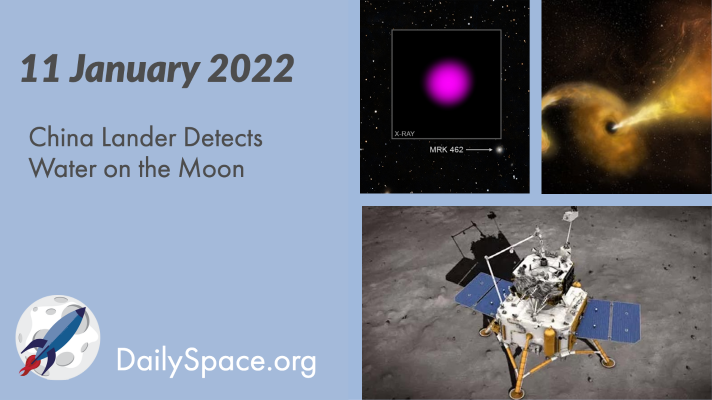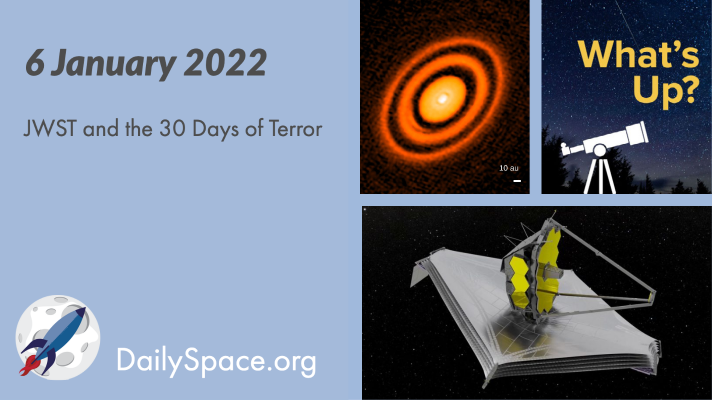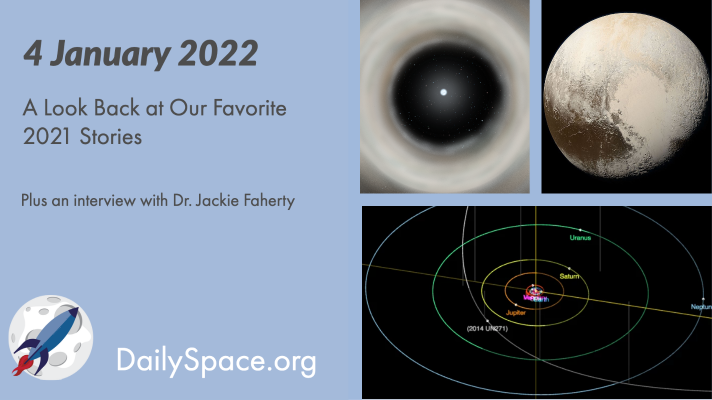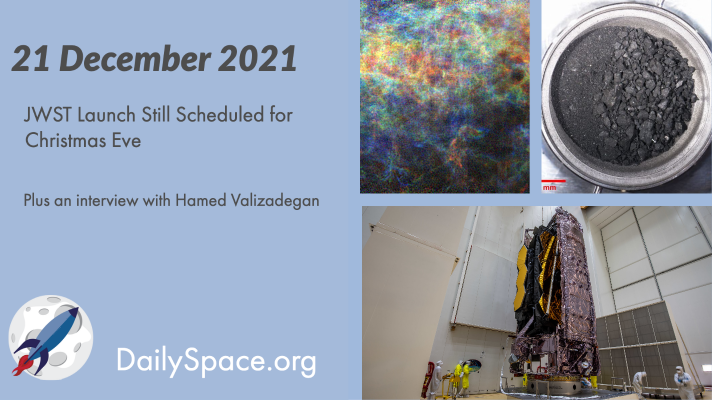
Jan 12, 2022 | Cosmology, Daily Space, Galaxies, JWST, Milky Way, Moon, Supermassive Black Holes, Supernovae, Very Large Array
China’s Chang’e-5 lunar lander has made the first in situ detection of water on the Moon, using reflectance spectroscopy from the surface of our natural satellite. Plus, all the news from the AAS virtual press conferences, including black holes and galaxies.

Jan 7, 2022 | Cassini, Daily Space, Earth, Globular Cluster, JWST, Our Solar System, Physics, Saturn, Sky Watching, Stars, Supernovae
With the successful launch of the JWST, the focus turns to the complicated process of unfurling the sunshield and unfolding the mirror. We’ll look at just where NASA is in the process and how much farther we have to go before first light. Plus, Earth and supernovae, and in this week’s What’s Up, we look forward to 2022’s astronomy events.

Jan 6, 2022 | Blue Origin, Crewed Space, Curiosity, Daily Space, JWST, Perseverance, Rockets, ROSCOSMOS, Soyuz, Space China, SpaceX, Starlink
The Rocket Roundup team takes a look back at the rockets that launched in 2021, with a review of the statistics and some highlights (including that one telescope that could have ruined Christmas).

Jan 5, 2022 | Citizen Science, Comets, Daily Space, Exoplanets, Guest Interview, JWST, LPSC, Mars, Pluto & Charon, Supernovae, White Dwarfs
Dr. Pamela and Beth each picked their three favorite stories from 2021, including news from Mars and Pluto and about distant comets and undead white dwarf stars. Plus, we interview Dr. Jackie Faherty from the American Museum of Natural History about citizen science, exoplanets, and JWST.

Dec 22, 2021 | Asteroids, Daily Space, ESA, Guest Interview, JAXA, JWST, Kepler, Milky Way, Neutron Stars / Pulsars, Physics
Dr. Pamela takes a deep dive into her feelings about the JWST, its pending launch, and just what the telescope means to the astronomical community. Plus, general relativity is still true, a huge filament of gas in the Milky Way, and we interview Hamed Valizadegan, project lead for ExoMiner.

Dec 8, 2021 | Asteroids, Daily Space, Dark Matter, Earth, ESA, Galaxies, JWST, Moon, Spacecraft, The Sun, Very Large Array
Astronomers using the Very Large Array in New Mexico spent 40 hours observing galaxy AGC 114905, which seemed to have little to no dark matter in 2019 observations. The new evidence shows there is no dark matter in the galaxy at all. Plus, more Hubble and JWST updates, an eclipse over Antarctica, and an interview with Dr. Franck Marchis about citizen science.








 We record most shows live, on Twitch. Follow us today to get alerts when we go live.
We record most shows live, on Twitch. Follow us today to get alerts when we go live.